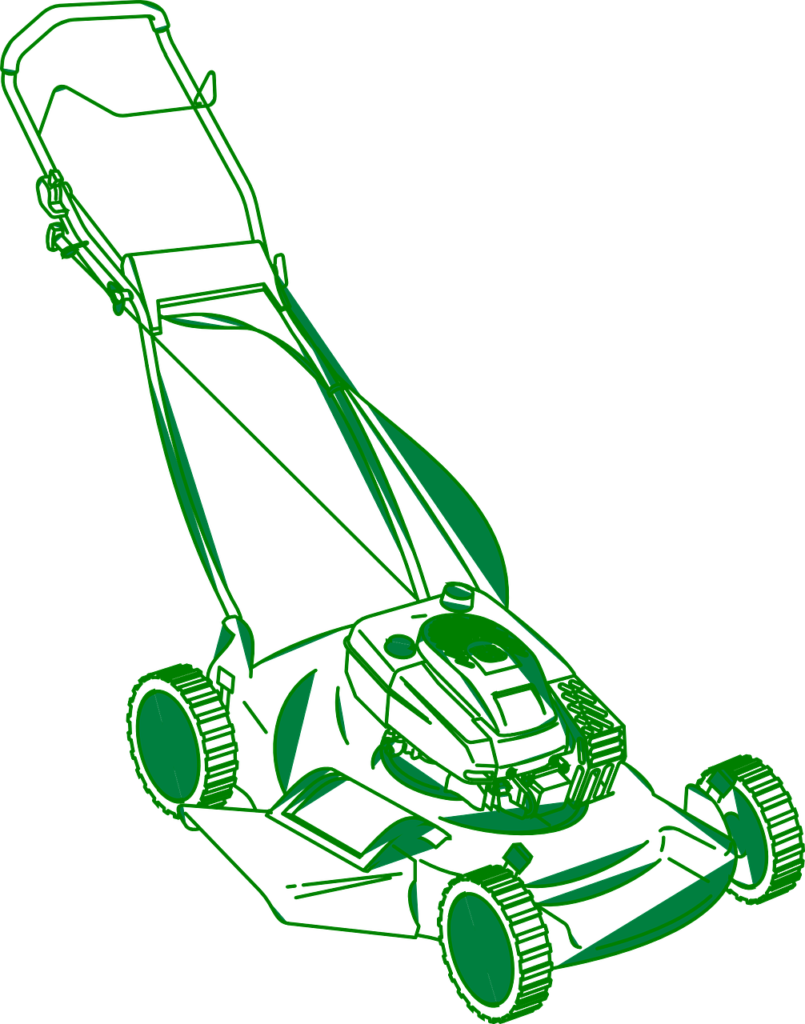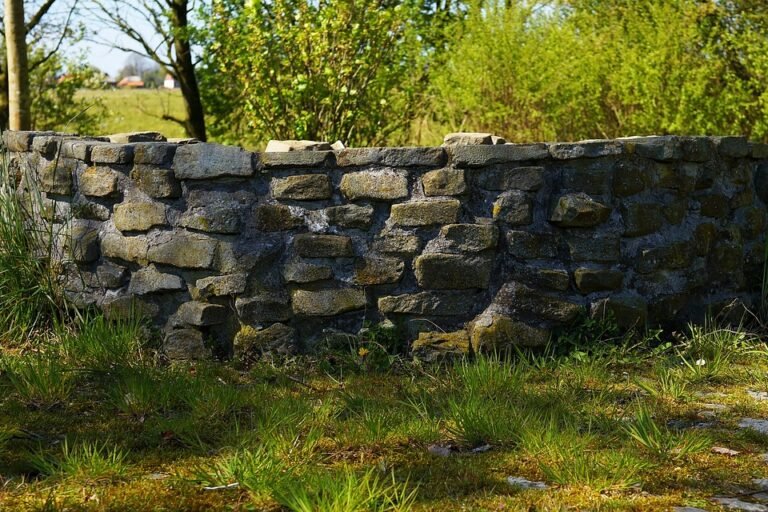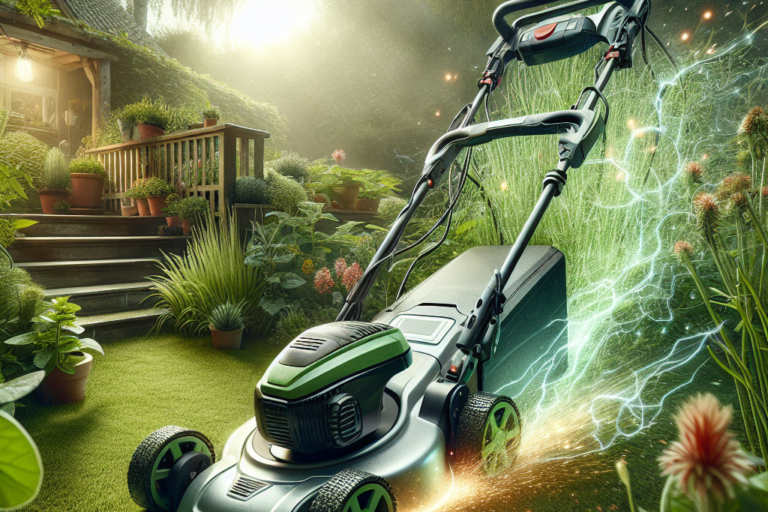Lush green lawns are undoubtedly a sight to behold, but maintaining them requires more than just regular mowing and watering. That’s where fall cleanup comes into play. As the days grow shorter and the temperature begins to drop, it’s crucial to give your lawn the attention it deserves. Fall cleanup in lawn care involves removing leaves, debris, and other unwanted elements that have accumulated over the summer months. By clearing away the clutter, you not only enhance the aesthetic appeal of your lawn but also promote healthier growth come springtime. So, let’s explore the significance of fall cleanup in lawn care and how it can set the stage for a thriving garden.
Prepare for Winter
Clear Leaves and Debris
Fall cleanup is an essential part of maintaining a healthy and vibrant lawn. One of the first tasks you should tackle is clearing away fallen leaves and debris. While it may seem like a tedious chore, this simple step can have a significant impact on the health of your lawn. Leaving leaves and other debris on your lawn over the winter can suffocate the grass, leading to mold and disease. By taking the time to rake or blow away leaves, you’re allowing your lawn to breathe and ensuring it has the best possible chance of thriving in the coming months.
Prevent Lawn Diseases
Another crucial aspect of fall cleanup is preventing lawn diseases. As the temperatures drop and moisture levels rise, certain fungal diseases, such as snow mold, can wreak havoc on your lawn. By removing thatch, which is a layer of dead grass and debris that accumulates on the surface, you’re reducing the risk of diseases taking hold. Thatch can trap moisture and create a breeding ground for pathogens, so removing it allows your lawn to stay dry and healthy. In addition to removing thatch, consider aerating your lawn to improve airflow and further prevent disease.
Avoid Pest Infestation
Fall cleanup is also essential for avoiding pest infestation. Many pests, including rodents and insects, seek shelter in piles of leaves and debris during the colder months. By clearing away this habitat, you’re minimizing the risk of pests taking up residence in your yard. Additionally, removing fallen fruits and vegetables can prevent pests from feasting on decaying produce and potentially spreading diseases. Taking these preventive measures now can save you from costly pest control measures and ensure a pest-free lawn in the spring.
Maintain Lawn Health
Remove Thatch
To maintain a healthy lawn, removing thatch is an important step. Thatch accumulation can prevent air, water, and nutrients from reaching the grass roots, leading to a weakened and unhealthy lawn. By using a thatch rake or a mechanical dethatcher, you can remove this layer of debris and promote a vibrant, thriving lawn.
Control Weeds
Weeds can quickly take over a lawn if left unchecked, so it’s crucial to control them before they become a nuisance. Fall is an excellent time to apply herbicides to prevent weed growth in the spring. However, it’s essential to choose the right herbicide for your specific lawn and follow the instructions carefully to avoid damaging your grass. By taking proactive steps to control weeds in the fall, you’ll be rewarded with a beautiful, weed-free lawn in the spring.
Promote Root Growth
Fall is an ideal time to promote root growth in your lawn. By applying a high-quality, slow-release fertilizer in the early fall, you’re providing essential nutrients to the grass roots. This promotes strong root development and prepares your lawn to withstand the harsh winter conditions. Healthy, deep roots are the foundation of a resilient lawn and can lead to better overall lawn health throughout the year.

Enhance Aesthetic Appeal
Maintain a Neat Appearance
A well-maintained lawn not only adds beauty to your home but also boosts curb appeal. By keeping your lawn neat and tidy, you’re creating a welcoming and visually appealing space. Regular mowing, edging, and trimming can transform your lawn into a well-groomed oasis. Additionally, taking the time to remove any lingering debris or clutter can make a significant difference in the overall appearance of your outdoor space.
Prepare for Spring
Fall is the perfect time to start preparing your lawn for the spring. By aerating the soil, you’re improving its ability to absorb oxygen, water, and nutrients. Overseeding thin or bare areas will also help to fill in any gaps and promote a thick, lush lawn in the coming months. With proper preparation and care in the fall, you’ll be rewarded with a vibrant and healthy lawn that will be the envy of the neighborhood when spring arrives.
Create a Clean Canvas
Fall offers a unique opportunity to create a clean canvas for your outdoor space. By pruning trees and shrubs, removing any dead or damaged branches, and tidying up flower beds and garden areas, you can create a clean and organized landscape. This clean slate allows you to plan and implement any desired changes or improvements in your yard during the winter months or in preparation for spring planting.
Ensure Safety
Prevent Slips and Falls
Keeping your lawn clear of leaves and debris not only benefits the health of your lawn but also ensures the safety of your family and visitors. Fallen leaves can become slippery when wet, increasing the risk of slips and falls. By regularly clearing your lawn, you’re reducing the chances of accidents and creating a safe environment for everyone to enjoy.
Avoid Damage to Equipment
Leaving debris, such as sticks and branches, on your lawn can pose a risk to your lawnmower and other equipment. Blades can become damaged or dulled if they come into contact with these objects, leading to costly repairs or replacement. By taking the time to clear your lawn of any potential hazards, you’re protecting your equipment and prolonging its lifespan.
Reduce Fire Hazards
Dead leaves and dry vegetation can be highly flammable, especially during dry periods. By clearing away these potential fire hazards, you’re reducing the risk of accidental fires. This is particularly important if you live in an area prone to wildfires. Ensuring your lawn is free of debris can provide an added layer of safety and peace of mind for you and your community.

Protect Water Quality
Clear Storm Drains
During the fall season, leaves and debris can accumulate in storm drains, causing blockages. This can lead to flooding and water pollution when heavy rains occur. By taking the time to clear storm drains in your neighborhood, you’re not just protecting your own property but also helping to prevent potential damage to the surrounding area’s water quality.
Prevent Runoff Pollution
Fallen leaves and other debris can be carried away by rainwater, resulting in runoff pollution. When these pollutants enter water bodies, they can harm aquatic life and disrupt the delicate balance of ecosystems. By clearing your lawn and disposing of the debris properly, you’re taking proactive steps to prevent runoff pollution and protect the water quality of nearby rivers, lakes, and streams.
Preserve Aquatic Ecosystems
Lawn chemicals, such as fertilizers and pesticides, can have a detrimental impact on aquatic ecosystems if not used correctly. By following proper lawn care practices, such as using environmentally friendly products and applying them responsibly, you’re helping to preserve the delicate balance of aquatic ecosystems. Taking care to prevent pollution and minimize the use of harmful chemicals is an essential part of being a responsible steward of the environment.
Boost Lawn’s Resistance
Prevent Snow Mold
Snow mold is a common lawn disease that occurs during the winter months when snow accumulates on the grass for an extended period. To prevent snow mold, it’s crucial to remove leaves and other debris from your lawn before the first snowfall. Additionally, mowing your lawn to a shorter height before winter can help prevent the development of snow mold. By implementing these preventive measures, you’re increasing your lawn’s resistance to disease and ensuring its health and vitality come spring.
Reduce Fungal Diseases
Fungal diseases can wreak havoc on a lawn, causing unsightly patches and leading to overall decline. By promoting good airflow, proper drainage, and removing excessive thatch, you’re reducing the conditions that are favorable for fungal diseases to thrive. Fall is an ideal time to address these issues as it gives your lawn ample time to recover and prepare for the growing season ahead.
Minimize Lawn Stress
Fall cleanup plays a vital role in minimizing lawn stress. Ensuring your lawn is free of leaves, debris, and excess thatch allows it to breathe and promotes healthy growth. By taking steps to minimize stress on your lawn, you’re setting the stage for a strong and vigorous lawn that can better withstand the challenges of the winter months and bounce back in spring.

Save Time and Money
Minimize Spring Cleanup
By investing time and effort into fall cleanup, you can significantly reduce the amount of spring cleanup required. Clearing away leaves, controlling weeds, and maintaining a neat appearance in the fall means less time spent cleaning up debris and preparing your lawn for the upcoming growing season. This time-saving benefit allows you to enjoy your lawn more and frees up valuable time for other activities.
Prevent Costly Repairs
Neglecting fall cleanup can lead to costly repairs down the line. From damage to equipment caused by debris to lawn diseases that require extensive treatments, the costs associated with avoiding fall cleanup can quickly add up. By staying proactive and taking care of your lawn in the fall, you’re ultimately saving yourself from potential headaches and expenses in the future.
Maximize Lawn’s Lifespan
Regular fall cleanup and maintenance can extend the lifespan of your lawn. By providing the necessary care and attention, you’re creating an environment where your grass can thrive and flourish. A healthy lawn is more resistant to diseases, pests, and environmental stressors, ensuring its longevity and reducing the need for extensive repairs or renovations in the future.
Promote Sustainability
Reduce Organic Waste
Fall cleanup presents an opportunity to reduce organic waste. Instead of sending fallen leaves and yard debris to landfill, consider composting or mulching them. Compost can enrich your soil and provide valuable nutrients for your lawn and garden. Mulching leaves and using them as a natural protective layer on your flower beds can help retain moisture and suppress weed growth. By finding sustainable ways to manage organic waste, you’re contributing to a more eco-friendly approach to lawn care.
Conserve Water
Conserving water is a crucial aspect of sustainable lawn care. Fall cleanup plays a role in water conservation by promoting proper drainage and preventing waterlogging. By removing excess thatch and debris, you’re ensuring that rainfall and irrigation water can reach the grass roots efficiently. This reduces the need for excessive watering and allows you to use water resources more responsibly.
Support Environmental Balance
By adopting sustainable lawn care practices, you become a steward of the environment and support a balanced ecosystem. Using organic fertilizers and pesticides, planting native species, and minimizing the use of chemicals all contribute to a healthier and more sustainable environment. By taking the time to implement these practices during fall cleanup, you’re doing your part to preserve and protect the natural world around you.
Prevent Overwintering Pests
Eliminate Hiding Spots
During the fall, it’s important to eliminate hiding spots for pests before they try to overwinter in your lawn. Clear away debris, trim overgrown vegetation, and remove any potential hiding places. Pests, such as rodents or insects, will be less likely to take up residence in your yard if they have nowhere to hide and seek shelter.
Reduce Insect Infestation
Fall cleanup plays a crucial role in reducing insect infestation. By removing fallen fruits, decaying vegetation, and other organic matter that may attract insects, you’re minimizing the risk of infestations. Inspect your lawn and garden for any signs of pests or damage, and take proactive measures to address any issues before they escalate. By preventing insect infestation in the fall, you’re protecting your lawn from potential damage and ensuring a healthier environment for your plants.
Avoid Plant Damage
Overwintering pests can damage your plants and compromise their health. By taking the time to clean up your lawn in the fall, you’re reducing the risk of pests using your garden as a food source or hiding place. Additionally, inspect your plants for any signs of pests or disease, and take appropriate action to mitigate the issues. By staying vigilant and proactive, you can protect your plants from damage and maintain their overall health.
Maintain Soil Nutrients
Reduce Nutrient Loss
Fall cleanup is an opportunity to reduce nutrient loss in your soil. By removing fallen leaves and other debris, you’re preventing the buildup of excessive organic matter that can deplete soil nutrients. This is especially important in areas with heavy leaf fall. By maintaining a proper balance of organic matter and nutrients, you’re creating the ideal conditions for your lawn to thrive.
Prepare for Spring Fertilization
Fall cleanup sets the stage for spring fertilization. By clearing the way and removing any obstacles, you’re ensuring that the nutrients you apply in the spring can reach the grass roots more effectively. Removing thatch and aerating the lawn allows for better absorption and utilization of fertilizers. By preparing your lawn in the fall, you’re giving it a head start and setting the foundation for a healthy and nutrient-rich grass.
Enhance Soil Structure
Fall cleanup can also improve the structure of your soil. By removing compacted leaves, thatch, and debris, you’re allowing air, water, and nutrients to penetrate the soil more easily. This, in turn, promotes better root development and overall soil health. By enhancing the structure of your soil, you’re creating a solid foundation for a resilient and vibrant lawn.
In conclusion, fall cleanup is not just about tidying up your lawn; it’s a crucial step in maintaining a healthy, vibrant, and sustainable outdoor space. By clearing leaves and debris, preventing lawn diseases, avoiding pest infestation, and taking care of other essential tasks, you’re setting the stage for a successful growing season. Fall cleanup also offers an opportunity to promote safety, protect water quality, boost your lawn’s resistance, save time and money, and support environmental balance. So, grab your rake and get ready to enjoy a beautiful and thriving lawn throughout the year.



